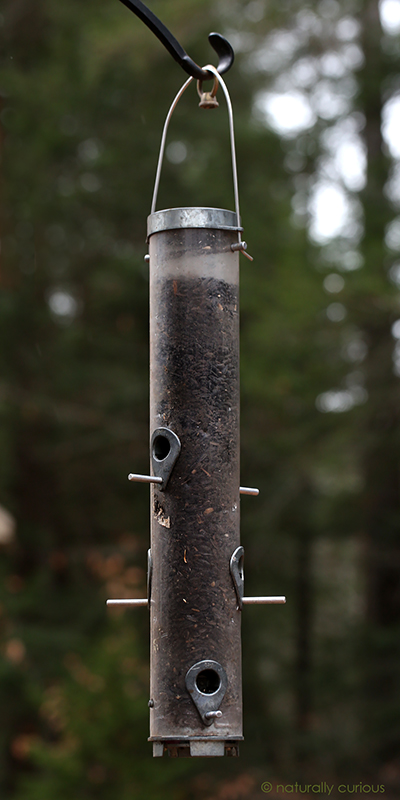Where Are All The Birds?

Even though signs as well as sightings of active bears are plentiful, and black-oiled sunflower seeds are an open invitation for them to visit and potentially become “nuisance” bears, many devoted bird-lovers have already hung out feeders in hopes of luring feathered friends closer to their home. Throughout northern New England so few birds have been attracted to these feeders that they have remained full, some not having been refilled since September. Our usual fall and winter visitors appear to have all but vanished, and concern has been growing amongst those who feed birds.
Those familiar with bird feeding habits know that in the fall, when seeds are abundant, feeder visits by resident birds typically slow down. However, this year, at least anecdotally, appears to be extreme in this regard. Warm weather extending into November certainly has lessened birds’ food requirements. But having sunflower seeds sprout in your feeder before the need to replenish them arrives is unusual, if not alarming.
Dr. Pam Hunt, Senior Biologist in Avian Conservation at New Hampshire Audubon, recently shared some of her personal research with the birding world (UV- Birders). Hunt has conducted a weekly, 10 km-long, bird survey near Concord, NH for the past 13 years. In addressing the current concern over a lack of feeder birds, she extracted the data she had accumulated on 12 common birds (Mourning Dove, Downy Woodpecker, Hairy Woodpecker, Blue Jay, Black-capped Chickadee, Tufted Titmouse, White-breasted Nuthatch, White-throated Sparrow, Dark-eyed Junco, Northern Cardinal, House Finch, American Goldfinch) over the last 13 falls, focusing on the period between Oct 1 and Nov 15. After extensive analysis, Hunt concluded that there has not been a dramatic decline in the number of birds this year, relative to the averages of the past 13 years. One cannot argue with scientific evidence (except for, perhaps, #45), but it does seem mighty quiet on the western (northeastern?) front this year.


















What Other Naturally Curious People Are Saying